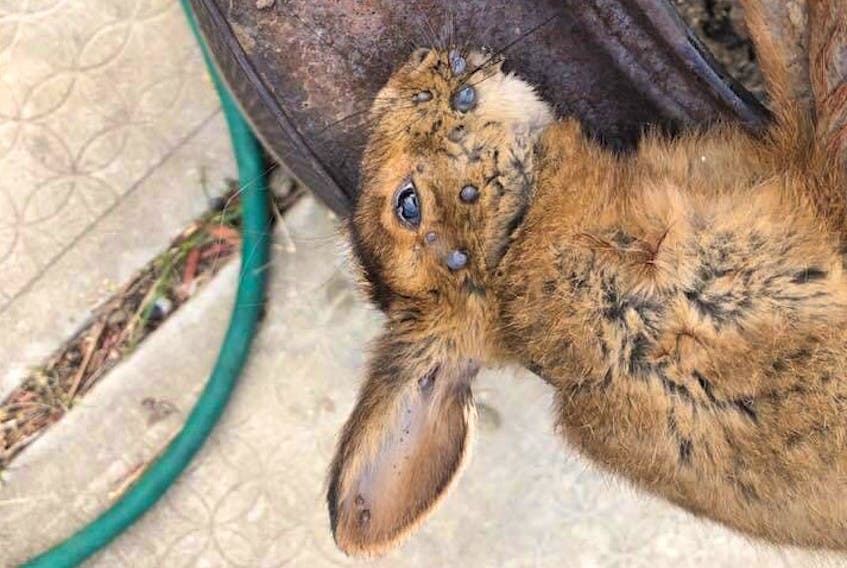By Josh Healey
Special to SaltWire Network
A Port aux Basques animal rescue group says it recently recovered a feral cat which was carrying a Lyme-positive tick — potentially the first confirmed infectious tick this year.
Velda Tapp, one of three people running the In Memory of Shadow Emergency Vet Care Fund, says the discovery is cause for concern across the region.
“It makes me think twice about what we’re doing,” said Tapp, explaining that the cat was rescued during a trip to the Codroy Valley.
She said the tick was removed from the cat’s face and sent off for testing; the insect was later confirmed positive for Lyme disease.
The tick has been sent to the national health laboratories for further testing.
Tapp says her group has been contacted about ticks by several people in town and further abroad this year.
A Port aux Basques animal rescue group says it recently recovered a feral cat which was carrying a Lyme-positive tick — potentially the first confirmed infectious tick this year.
“It’s not only in the Codroy Valley, it’s (all) on the west coast,” she said, adding she was also informed about a rabbit in the valley which had dozens of ticks on its body.
When asked if the Southwest Coast SPCA was surprised to learn of a Lyme-positive tick, board member Jeanie Aucoin noted there’s been a slight rise in the number of sightings of the insects — although not necessarily in disease-carrying ticks — over the years.
“I think ticks have always been around and we’ve seen them sporadically, specifically on people who frequented forested areas,” she said.
“But we didn’t have ticks coming back positive for Lyme disease. These last couple of years, they’ve been negative in Newfoundland.”
Aucoin added that several ticks have been reported and tested in the Stephenville area.
A spokeswoman for the Department of Fisheries and Land Resources said a total of 30 ticks have been tested this year for Lyme disease, with only one confirmed case.
The average number of ticks tested per year is between 60 to 70.
Media relations manager Connie Boland said that although there was no evidence to indicate an increase in Lyme disease in the province, the government encourages members of the public to practice preventative measures.
Suspect ticks, she said, are accepted by vet clinics, physicians’ offices and conservation officers. They may also be submitted directly to the Fisheries and Land Resources lab in St. John’s or at regional offices in Pynn’s Brook and Clarenville for testing.
Samples are then sent to the National Microbiology Laboratory in Winnipeg.
Aucoin echoed Boland’s message, noting inspections of both people and animals are key to prevention.
Checks can be done by carefully looking over dark, warm places like armpits and between toes.
If a tick is found, said Aucoin, they can be removed with tweezers or by using a twisting motion with your fingers.
“It’s something that we need to keep an eye on,” she said. “You should be inspecting your animal daily.”
Lyme disease was first reported in Newfoundland and Labrador back in 1996; two human cases were last diagnosed in 2015.









